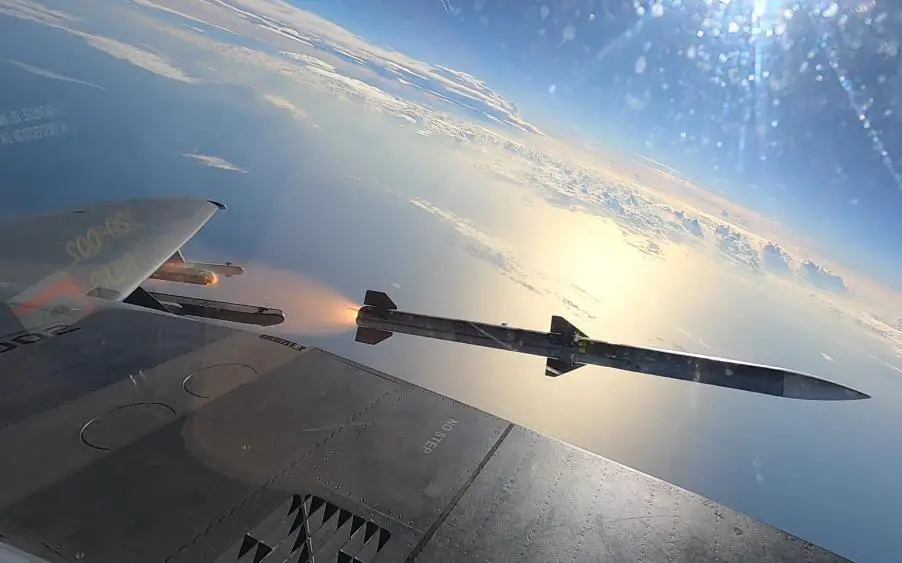Flying locally over the Gulf of Mexico, two F-15EX Eagle II fighters launched missiles from their new weapon stations, known as Stations 1 and 9. The 96th Test Wing’s pilots fired an AIM-120 Advanced Medium-Range Air-to-Air Missile from Station 1 and an AIM-9X from Station 9 over the Eglin Test and Training Complex’s water range. This Operational Flight Program Combined Test Force mission was the first Air Force test flight to validate the weapons could be fired effectively and safely from those stations. The successful employment of these weapons is a major step in demonstrating the Eagle II aircraft’s missile capacity of 12 air-to-air missiles. With this success, these missile launches pushed forward the aircraft’s integrated developmental and operational testing here, where the F-15EX fired its first missile just nine months ago. Once initial testing is complete, operational units receiving the new F-15EX will be able to carry and employ a full load-out of 12 missiles on the aircraft upon fielding.
“Having been a part of the Eglin F-15EX team from day one, it’s exciting to see the progress made and new milestones achieved as we work to field the most combat-capable F-15EX,” said Maj. Brett Hughes, OFP CTF, who successfully fired the AIM-120 from Station 1.
“I’m really proud to be a part of this milestone for the F-15EX program to deliver increased payload capacity to the combat air forces,” said Maj. Jeremy Schnurbusch, 40th FLTS-attached pilot, who fired the AIM-9X missile.
“The F-15EX is an incredible addition to the USAF inventory. This event, executed by a top-notch team of test pilots, engineers, and experts, proves yet again the F-15EX will be ready if, and when, our adversaries challenge our nation’s interests,” said Lt. Col. Christopher Wee, OFP CTF commander.

This is one of many upgrades F-15EX brings to the Air Force inventory. Prior to the F-15EX Eagle II, F-15 aircraft models could carry eight air-to-air missiles. The F-15EX Eagle II adds four additional missile stations located toward the wing tips. This mission provided the first test points for validating the expanded carriage and employment capabilities of the Eagle II. Both aircraft successfully released the missiles on separate passes against a target drone. The releases were another milestone in the F-15EX’s developmental test program, but also incorporated many operational test objectives during the mission. The USAF opted for the F-15EX to maintain fleet size as F-22 production ended, the F-35 was delayed, and its F-15Cs aged. Although it is not expected to be survivable against modern air defenses by 2028, the F-15EX can perform homeland and airbase defense, no-fly zone enforcement against limited air defenses, and deploy standoff munition.
The AIM-120 Advanced Medium-Range Air-to-Air Missile, or AMRAAM is an American beyond-visual-range air-to-air missile capable of all-weather day-and-night operations. It is 7 in (18 cm) in diameter, and employs active transmit-receive radar guidance instead of semi-active receive-only radar guidance. It is a fire-and-forget weapon, unlike the previous generation Sparrow missiles which needed guidance from the firing aircraft. When an AMRAAM missile is launched, NATO pilots use the brevity code Fox Three. The AIM-9 Sidewinder (where “AIM” stands for “Air Intercept Missile”) is a short-range air-to-air missile which entered service with the US Navy in 1956 and subsequently was adopted by the US Air Force in 1964. Since then the Sidewinder has proved to be an enduring international success, and its latest variants remain standard equipment in most Western-aligned air forces. When firing a Sidewinder, NATO pilots use the brevity code FOX-2.

















